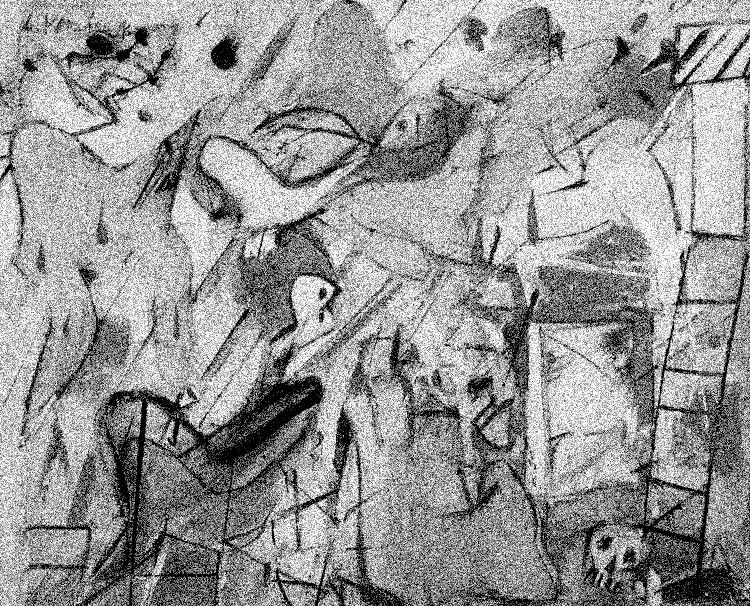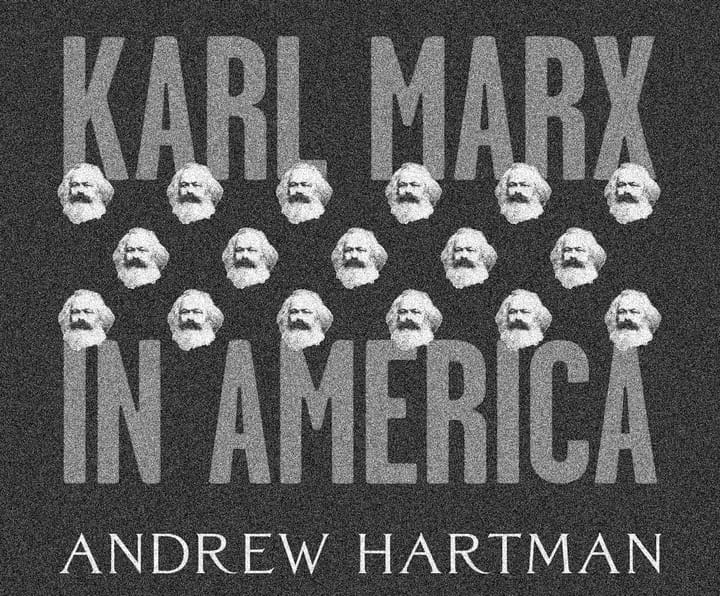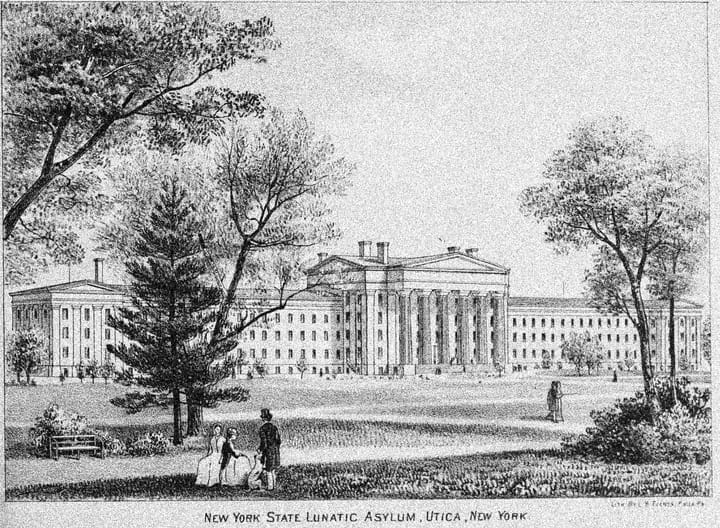Safe Substitutes for Posting
Dylan Riley’s mini-essays are an affordable treatment for the mental disorder of reification.

Review of Dylan Riley, Microverses: Reflections from a Shattered Present (Verso Books, 2022).
One of the main arguments of critical theory is that the development of mass industrial society destroys the capacity for experience.
Instead of attention, inner resources, memory, and self-reliance, we get narcissism, re-adjustment to the signals of social surroundings, ephemera, lack of concern with the future and posterity, and a lack of real connection to others. Absent grounding institutions and tradition, individuals float alienated through a meaningless and association-less world of fragments.
If you believe this description of contemporary inner experience is, in broad strokes, true (and all the current studies of the time spent on screens, decline of attention, decline of sex, and plummeting participation in civil society make a convincing case that it is), then one task for intellectuals and writers is to provoke cognitive experience that opens up thinking to be more than regimentation, desire more than addiction, experience more than algorithm.
Hence the role of aphorism books in the Frankfurt School tradition. In works like Minima Moralia, Dawn/Dusk, Traces, and One-Way Street, propositions function as lures for exploratory feeling and thinking. The direct truth value of a proposition is subordinated to the proposition’s role in luring feelings of intensity or possibility. The aesthetic aspect of thinking dominates, heightening senses of futurity and contrast that are basic to our capacities for experience. Effective aphorisms dose out spontaneity—experience that has to find something not already given.
Of course, this way of thinking about writing often degenerates into a rationalization for incoherence. Take, for example, post-colonial theory’s rejection of its own status as a “theory”—that is, as a set of definite propositions that can be examined and assessed. To the school of rationalized incoherence, “claims do not exist anymore; only narratives.” (Assent to Vivek Chibber’s refutation here is an important contemporary litmus test for sanity.)
Books written in the aphoristic tradition try to split the difference. We can have writing that is at once seriously conceptual and critical and also imaginative, suggestive, and fragmentary. These are propositions, not just tropes, but they are also lures for thinking with analogical suggestions, not just definitions.
“Culture” means the capacity for experience, for integrating intensity and variety, undergoing and doing into coherent arcs of events. The capacity for experience is connected to capacity for attention. Sustained attention is what is under attack. You can see this both in the rejection of insuperable logic, and in the inability to make anything but “determinative” or theoretical judgments.
Writing Exercises
Dylan Riley’s Microverses revives the genre of short reflective writing that links “politics in the broad sense” with “personal experience and sociology” (Preface, x), which has been replaced (or obliterated) by short-form social media posting. The book covers a range of genres from classic ideology critique, to defenses of classical sociology, to reflections on Riley’s personal and academic life.
Riley admits that the book grew out a personal writing exercise and doesn’t pretend to compete with the heavy-hitters in the genre. His ambition for the book is to show “that it might be possible to draw lessons of broad theoretical import from individual experience, and vice versa to illuminate experience through the language of social theory” (Preface, xi).
On this count, the book is a mixed success. The most successful sections show how academia is a vast apparatus to stop the production of thinking. Here is a characteristic section:
Little stories. Claims do not exist anymore; “narratives” have replaced them. What accounts for this odd transformation of language? Doubtless it is a general effect of postmodernism—according to Google Ngram Viewer, use of “narrative” began to spike in the early 1980s. But the intrusion of the word into middlebrow culture, the space of NPR or the NYT in the US, seems more recent. Is it the delayed effect of so many years of teaching Lyotard, his language now finally having seeped into the forma mentis of the average journalist? In any case its chloroforming function is quite remarkable. Narratives are either “pushed” or “pushed back on.” Unlike claims they are not investigated, shown to be either compatible or incompatible with the available evidence. It is true that we often hear of “false narratives.” But the modifier sits oddly with the noun; how exactly can a story be either true or false? More commonly, the journalist assumes a stance of pseudo-sophisticated relativism, reporting on the various “competing narratives” (as if all the world were a market for mediocre fiction). This too is an example of the potency of theory, but in this case it is a force that enervates and blinds rather than strengthens and enlightens (59).
In a later section on “Ideas,” Riley explains the cheapening of thinking and ideas into a game of position-taking, social identification, and classification. As an antidote he suggests a classical sociological idea of criticism: examining the conditions of possibility for a situation in which a problem or question arises, and indexing the problem to those conditions.
Social theory’s most basic purpose is to denaturalize the social world. That world now appears to be what it in fact is: an instance of a possible social world among two or more possible such worlds (capitalism rather than feudalism; legal-rational rather than traditional authority; organic rather than mechanical solidarity; urban civilization rather than desert civilization). The point is to use the contrasts between total social types to force the listener into a mode of questioning: “Why do I work for a wage, when others clearly do not?” “Why is there not constant civil war?” “Why are there so many mediocrities in power with all the incessant chatter about the value of education?” “Why are so many talents wasted?” (52)
Sociological reflection, says Riley, is “powerful therapy for the mental disorder of reification” (53).
Storming The Libraries
Sociological and intellectual critique is an abiding preoccupation, but the book is ultimately about the contemporary Left. Riley’s contention is that “there is a politics of concepts” (103), and that this politics is important to a left strategy for political power.
For Riley, the axis dividing the Left runs along a “legalistic”, redistributive, state-focused politics vs. one that takes up the task of a “hegemonic” struggle over the accumulation model and investment of social surplus. The former is a reformist Left and the latter a revolutionary one with which Riley aligns himself.
The “legalistic framework in which the contemporary US Democratic Left moves” (59) is a major concern. This framework is the animating schema behind the contemporary “social justice” movements and the rhetoric of new socialist politicians like Alexandra Ocasio-Cortez:
This left conceives of the fundamental flaw of US society to be one of unfairness and injustice: monopoly power, concentrated wealth, a “rigged” political system. All these ideas are concentrated in the term “social justice.” The problem with this essentially forensic diagnosis is that all of its demands are perfectly compatible with private ownership of society’s main productive assets, as well as the private determination of society’s investment decisions (39).
Riley’s connection of the “legalistic” framework with social justice rhetoric is clear. Curiously, however, he also asserts that the other main tendency of the contemporary Left, the “neo-Kautskyian” wing (think Jacobin’s Bhaskar Sunkara) is also compromised by this legalistic framework. Both are similarly beholden to a politics of redistribution, as opposed to a politics that intervenes in models of accumulation and social investment. The connection would probably come as a surprise to members of both camps.
The alternative Riley proposes is the vision of socialism in the grand continental sociological tradition, with language reminiscent of Marx, Durkheim and Lukács:
The US left should talk much less about making society fairer (a muddled and basically petit bourgeois notion) and much more about making society more rational or human. For after all, isn’t the goal of every serious socialist the subordination of the blind processes of second nature—and perhaps in our day we should add the brutal vengeance of first nature—to the will of humanity? How can the grandeur of this project be fitted in the narrow framework of fairness? (39)
Therapy, Not Politics
It is true that the rhetoric of the social justice Left overemphasizes a too narrow legalistic focus on equity and fairness, which leaves out macro-social factors like production and investment. But for union organizers convincing workers to take the risk of collective action, notions of fairness and equity are essential for moving people to action. The growth and militancy of the labor movement depends in some part on moral appeals to fairness and what is owed to workers. These notions are similarly important for achieving redistributive reforms that attract and develop political constituencies.
Obviously there is a big difference between AOC’s Instagram rhetoric and the day-to-day challenges of organizing in labor and politics. But Riley’s broadly-painted theoretical perspective unhelpfully lumps these together.
This tendency to take a valid critical insight rooted in the classical sociological tradition, but then muddle it by turning it into political prescription is clearest in Riley’s treatment of negativity. Riley rightly criticizes “…the dogma that existence can be fully described by what is, without recognizing that the is is always the negative image of what could have been, and therefore contains within itself a series of absences” (102). You can’t define, say, democracy, the state, by making a big list of positive features or instances and ignoring potentials within the concepts themselves. Positive attributes do not exhaust reality in the social sciences because society is also subject.
This is a helpful point to keep in mind when developing strategies for social change. But in the final section of the book, “Who Speaks?”, Riley’s reflections on negativity lead him to strange conclusions. In the final pages of the book he compares Lenin’s criticism of trade-union consciousness (labor leaders are leaders of labor in the condition of its subjugation to capital, and therefore are incentivized to preserve that situation rather than transform it) to Booker T. Washington’s conceptions of race leadership as relying on a similar dynamic. In the latter, self-appointed “race leaders” are incentivized to preserve the conditions of subjugation inherent in a society that practices rampant Racecraft, rather than to seek to abolish the reified ideologies of race that justify this subjugation.
These situations are only similar from a very distant and abstract perspective, from which they can be portrayed as instances of the forces of “the positive” (stopping short at what merely is) vs. the negative (tracing current dynamics towards progressive conclusions that transcend the current terms). In historical, institutional, and political terms, however, the equation of Washington’s elitist philosophy with the moderating tendencies of trade union development is radically reductive.
To Riley, the vital political question is “which dimension of the class is to be pursued—it’s positive or its negative” (128). I disagree that this is a meaningful political question in the present. In hollowed-out post-democracy, positive institutions like labor organizations need building and construction. The decimation of trade unions and the decline of other civil society institutions has left the US a barely sane society of madmen. The Left needs associations, especially class-based associations, more than the Right. They are essential to democracy but largely irrelevant to capital, since capital will always require and maintain its own organizations regardless of the fate of civil society. There is a positive task here for the Left. The positive / negative question only comes into view from 35,000 feet up. The vital political questions are how the positive task gets carried out.
Reflective treatment of social and political questions is valuable as an exercise in keeping experience open. It’s a good check to make sure you’re not getting bogged down in pseudo-problems or barking up the wrong tree. But it is only effective when rooted in an adequate understanding of the political conjuncture it criticizes.
Riley points out that for much of the history of the Left, intellectual problems arose as practical problems. “Problems that appear in the social sciences today as purely methodological such as that of interpretation (the relationship between scientific and lay categories) or that of causality, were treated by men like Gramsci as political problems… the issue of how to develop class consciousness… the issue of causality as a matter of revolutionary strategy” (32). Riley is right, of course, but also describing his own failure. Ultimately, Microverses is too distant from the Left, the institutions that are left of it, and the political situation in which it is operating to have much of a grasp on what precisely is going on today.
When dealing with academia, journalism, and media on the Left, Riley does a good job of breaking us out of bad habits. His criticism of the disordered thinking and comic detachment of this world are successful. But in politics, he takes his own conceptual structures as direct realities, and suffers from the fallacy of misplaced concreteness. The rigid politics that run through the book are a drag on an otherwise interesting writing exercise.
■
Harold Florida is a novelist in Hartford, CT. His first novel, Perfecte Ceremonie, was a finalist for the 2021 Greater Cincinnati’s Emerging American Novel of Note Award.



